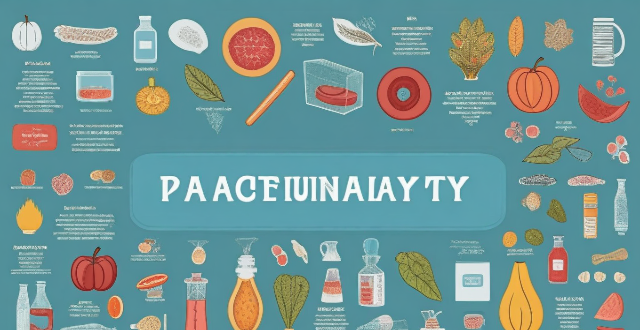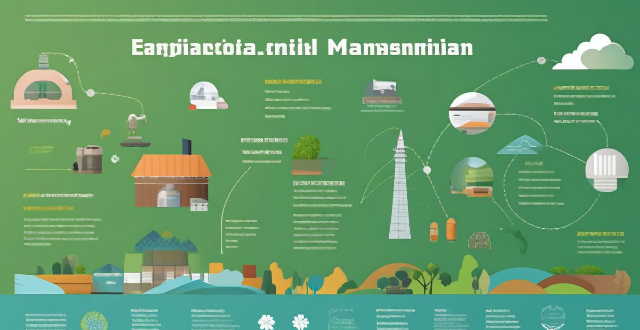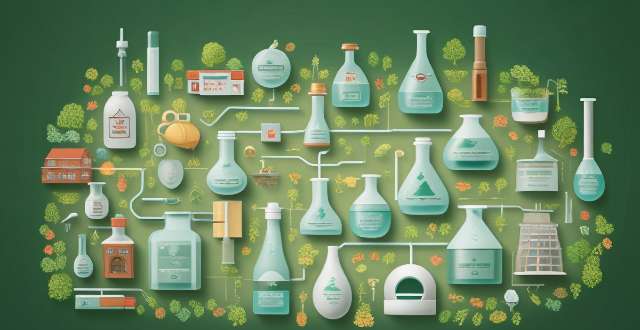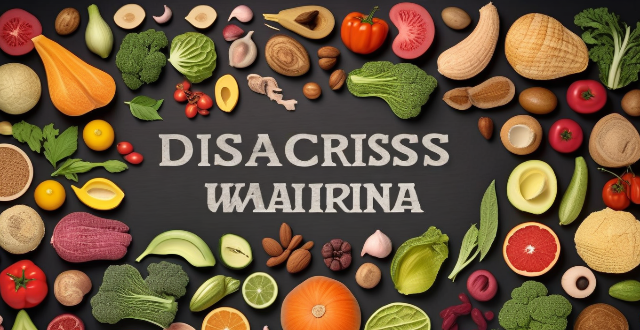Chemical Agricultural

How do agricultural practices influence biodiversity ?
Agricultural practices significantly impact biodiversity, affecting ecosystem services like pollination and soil health. Monoculture reduces biodiversity due to habitat loss and pesticide use, while polyculture enhances it through diverse habitats and reduced chemical inputs. Organic farming benefits biodiversity by avoiding synthetic chemicals and promoting natural pest control, whereas conventional farming can harm it through pesticide toxicity and nutrient runoff. Land management practices like tillage disrupt soil ecosystems, while no-till farming preserves them. Water management also plays a role; sustainable practices like drip irrigation conserve water resources and support aquatic life. Adopting sustainable agricultural methods can help conserve biodiversity while maintaining productive systems.

How does climate adaptation impact agricultural practices ?
Climate adaptation is crucial for maintaining agricultural productivity and sustainability amidst shifting environmental conditions. It impacts agricultural practices in several ways, including changes in planting schedules, use of drought-resistant crops, water management techniques, soil health management, livestock management, pest and disease management, diversification of crops and income streams, adoption of smart technologies, and policy and infrastructure support. By embracing these changes, farmers can continue to produce food while minimizing the environmental impact of their operations and building resilience against future climate challenges.

How do agricultural practices impact the environment ?
Agriculture is a vital sector for human survival, but its practices can have significant impacts on the environment. Deforestation and land use changes, water pollution, air pollution, soil degradation, energy consumption, and loss of biodiversity are all potential negative effects of agriculture. However, adopting sustainable practices such as conservation tillage, integrated pest management, precision farming techniques, and diversified cropping systems can minimize these impacts while maintaining agricultural productivity. It is crucial for farmers, policymakers, and consumers to prioritize environmentally friendly agricultural practices to ensure a sustainable future.

What are some best practices for climate risk management in the agricultural sector ?
Climate risk management is critical for the agricultural sector, which faces significant vulnerabilities due to changing weather patterns and extreme events. Key practices include assessing climate risks, integrating climate information into decision-making, enhancing ecosystem resilience, building human capacity, and planning financially with insurance. By adopting these strategies, farmers can adapt to climate change and reduce their risks, ensuring a more resilient agricultural sector.

What are the best practices for chemical protection in a laboratory setting ?
The text provides best practices for chemical protection in a laboratory setting, including wearing appropriate personal protective equipment, proper storage and handling of chemicals, using proper ventilation, having a spill response plan, disposing of waste properly, and staying informed and trained. These practices are crucial to ensure the safety of individuals working with hazardous chemicals in a lab environment.

Is it ethical to engage in deforestation for agricultural purposes ?
Is it ethical to engage in deforestation for agricultural purposes? This question requires a nuanced understanding of both environmental ethics and the needs of agriculture. The case against deforestation includes loss of biodiversity, climate change, and soil erosion and water quality issues. However, the case for agricultural deforestation includes food production, economic opportunities, and sustainable practices. To navigate the ethical implications of deforestation for agriculture, a balanced approach is crucial, including reducing new land needed, regenerative agriculture, agroforestry, policy and regulation, and public awareness. While the need for agricultural land is pressing, engaging in deforestation without considering its broader ecological consequences is not ethically sustainable. It is essential to find ways to meet our agricultural needs while also preserving the integrity of our planet's ecosystems. By promoting sustainable agriculture and implementing protective measures, we can move towards a future where food production and forest preservation coexist harmoniously.

How do flow batteries compare to traditional chemical batteries ?
Flow batteries and traditional chemical batteries are both used for energy storage, but differ in aspects such as energy storage mechanism, power and energy density, lifespan and maintenance, and cost and scalability. Traditional chemical batteries store energy through chemical reactions within cells and have a fixed capacity, while flow batteries use external tanks of electrolyte solutions and have adjustable capacity. Traditional chemical batteries can deliver high power output per unit weight or volume and have moderate energy density, while flow batteries typically have lower power density but higher energy density. Traditional chemical batteries have a limited number of charge and discharge cycles before performance degrades and require regular maintenance, while flow batteries can undergo a larger number of cycles without significant degradation and require less maintenance. Traditional chemical batteries often have higher upfront costs and limited scalability, while flow batteries generally have lower upfront costs and offer more flexibility in scaling up. The choice between the two depends on the specific requirements of the energy storage application.

How do hazmat suits provide protection against chemical exposure ?
Hazmat suits, also known as chemical protective clothing or chemical resistant suits, are specialized garments designed to protect wearers from hazardous materials. These suits offer a high level of protection against chemical exposure by creating a barrier between the wearer and the environment. The key features of hazmat suits include their material, design, breathability, and comfort. The article discusses how hazmat suits provide protection against chemical exposure in detail, including the levels of protection offered by different types of suits.

How does PPE protect against chemical exposure in industrial settings ?
In industrial environments, workers are often exposed to hazardous chemicals that can pose significant health risks. Personal Protective Equipment (PPE) plays a crucial role in safeguarding these workers from potential harm. This article delves into the various types of PPE and how they protect against chemical exposure. Types of PPE for Chemical Protection include respiratory protection such as filtering facepiece respirators, powered air-purifying respirators, and self-contained breathing apparatuses; skin and eye protection like chemical-resistant gloves, aprons and suits, and goggles and face shields; and foot protection like chemical-resistant boots. PPE works against chemicals by forming a physical barrier between the worker and the chemical, absorbing or adsorbing chemicals before they reach the user, and isolating the user completely from the external environment. Best practices for using PPE include ensuring proper fit and comfort, regular inspection and maintenance, and comprehensive training and education on how to use PPE effectively. The correct use of PPE is essential for the safety of workers in industries where chemical exposure is a risk. Employers must ensure that appropriate PPE is provided, maintained, and used correctly to create a safer work environment.

How often should chemical protective gear be replaced or maintained ?
Chemical protective gear is essential for workers exposed to hazardous chemicals. The frequency of replacement or maintenance depends on the type of gear, level of exposure, and manufacturer's recommendations. Regular visual inspections and testing are crucial to ensure that the gear remains effective and safe. By following the manufacturer's guidelines, workers can minimize their risk of exposure to hazardous chemicals and protect their health and well-being.

Can you explain the different levels of chemical resistance in protective clothing ?
Chemical resistance is a crucial aspect of protective clothing, especially for those working in hazardous environments. The level of chemical resistance required depends on the type and concentration of chemicals present in the work area. Here, we will discuss the different levels of chemical resistance in protective clothing: 1. Level A: Highest Level of Protection 2. Level B: Intermediate Level of Protection 3. Level C: Lower Level of Protection 4. Level D: Basic Protection

In what scenarios is it necessary to use chemical protective measures in an industrial setting ?
Industrial settings often require chemical protective measures to ensure worker safety. These scenarios include handling hazardous chemicals, working in confined spaces, performing maintenance on chemical process equipment, disposing of hazardous waste, and emergency response to chemical incidents. Workers must wear appropriate personal protective equipment (PPE) such as gloves, aprons, goggles, and respiratory protection devices to prevent exposure to harmful chemicals. Examples of these scenarios include manufacturing processes involving strong acids or bases, tank cleaning in the petrochemical industry, repairing valves or pipes in chemical processing plants, disposal of chemical waste at landfill sites, and firefighting and rescue operations during chemical fires or explosions. By implementing these chemical protective measures in relevant industrial scenarios, employers can help safeguard their employees from potential health hazards associated with chemical exposure.

What is the role of respirators in chemical protection, and how are they classified ?
Respirators play a crucial role in chemical protection by filtering out harmful particles and chemicals from the air. They are designed to protect workers from inhaling toxic substances, such as gases, vapors, and particulate matter, that may be present in their work environment. Respirators are essential for ensuring worker safety and preventing respiratory diseases caused by exposure to hazardous chemicals. Respirators can be classified into two main categories based on their design and function: air-purifying respirators (APRs) and atmosphere-supplying respirators (ASRs). APRs remove contaminants from the air before it is inhaled, while ASRs provide clean air from an external source through a hose or pipeline. When selecting a respirator for chemical protection, several factors must be considered, including the type of hazard, level of protection required, fit and comfort, and maintenance and care. By understanding the different types of respirators and selecting the appropriate one based on the specific hazard, employers can help ensure the safety and health of their employees.

What is the importance of understanding material safety data sheets (MSDS) in chemical handling and protection ?
The text discusses the importance of understanding Material Safety Data Sheets (MSDS) in chemical handling and protection. It explains what an MSDS is, its significance for health and safety, compliance with regulations, environmental protection, and risk management. The article emphasizes that understanding MSDS is crucial for workers and employers to ensure a safe and healthy work environment.

How do climate targets impact agricultural practices ?
Climate targets set by governments and international organizations play a significant role in shaping agricultural practices. These targets aim to reduce greenhouse gas emissions, promote sustainable development, and mitigate the impacts of climate change. The following are some ways in which climate targets impact agricultural practices: 1. Shifting towards Sustainable Farming Methods One of the primary impacts of climate targets is the shift towards more sustainable farming methods. This includes practices such as conservation tillage, integrated pest management, cover cropping, and agroforestry. 2. Adoption of Renewable Energy Sources To meet climate targets, farmers are encouraged to adopt renewable energy sources for their operations. This can include solar power, wind energy, and bioenergy. 3. Changes in Crop Choices and Rotations Climate targets may also lead to changes in crop choices and rotations to adapt to changing environmental conditions and reduce the carbon footprint of agriculture. This can involve planting perennial crops, diversifying crop rotations, and selecting climate-resilient crops. 4. Improved Water Management Water is a critical resource for agriculture, and climate targets often focus on improving water management to reduce water usage and protect water resources. This can involve dripper irrigation, rainwater harvesting, and planting water-efficient crops. 5. Carbon Sequestration and Soil Health Maintaining healthy soils is essential for mitigating climate change, as soils can act as carbon sinks. Climate targets encourage practices that improve soil health and increase carbon sequestration, such as composting, reduced tillage, and intercropping.

How can schools and educational institutions promote awareness about the risks associated with harmful chemicals ?
Schools and educational institutions can promote awareness about the risks associated with harmful chemicals by incorporating lessons on harmful chemicals into their curriculum, organizing workshops and seminars for students, teachers, and parents, collaborating with local communities to organize outreach programs, partnering with local businesses to promote eco-friendly practices, encouraging research and innovation through science fairs and competitions, promoting safe practices within schools through chemical management plans and prioritizing the use of eco-friendly products.

What are the different types of fire extinguishers ?
This text provides a comprehensive guide to the various types of fire extinguishers available, each designed for specific classes of fire. It includes detailed descriptions and pros & cons of water, foam, carbon dioxide (CO2), dry chemical, wet chemical, pre-action wet chemical, and clean agent fire extinguishers, emphasizing their suitability for different types of fires such as class A, B, C, and K. The text concludes by highlighting the importance of choosing the right type of extinguisher based on potential fire hazards in one's environment.

What is the impact of climate change on agricultural employment ?
Impact of Climate Change on Agricultural Employment: - Reduced Crop Yields due to droughts, floods, and loss of biodiversity can lead to job losses. - Changes in Cropping Patterns, such as shifting to new crops or shortened planting seasons, may require different skillsets and reduce employment opportunities. - Increased Pest and Disease Pressure can result in more labor for monitoring and management but also potential job losses from crop failures. - Infrastructure Damage and Displacement caused by extreme weather events can affect farming operations and employment levels. - Adaptation and Resilience Efforts, including developing resilient crop varieties and adopting sustainable farming practices, can create new job opportunities.

How do you properly dispose of chemicals to ensure safety and compliance with regulations ?
Proper disposal of chemicals is crucial for environmental and health safety. Identify the chemical, classify it as hazardous or non-hazardous, determine the appropriate disposal method, follow packaging and labeling guidelines, comply with regulations, consider alternative disposal methods, and train personnel on safety procedures to ensure safe and compliant disposal.

What are the economic implications of climate change for the agricultural sector ?
The text discusses the economic implications of climate change for the agricultural sector, including changes in crop yields, increased costs of production, shifts in trade patterns, and the need for adaptation strategies. Climate change can lead to a decrease in crop productivity due to extreme weather events, changes in temperature and rainfall patterns, and pests and diseases. The unpredictability of weather patterns makes it difficult for farmers to plan their crops and manage resources effectively, resulting in higher risk and reduced investment. Climate change can also increase the costs of agricultural production through adaptation measures, input costs, and insurance. As some regions become more favorable for certain crops while others become less so, there could be significant shifts in global trade patterns, leading to new market opportunities and loss of competitiveness. To mitigate the negative impacts of climate change on agriculture, there is a need for adaptation strategies such as research and development, policy interventions, and education and training.

How has global warming affected agricultural practices and food security ?
Global warming has significantly influenced agricultural practices and food security worldwide, affecting areas such as altered climate conditions, pest and disease management, crop variety and production, and food security concerns. These changes include irregular rainfall patterns leading to droughts and floods, water scarcity, extreme temperature fluctuations causing heat waves and cold spells, increased pest infestations and new pest species introduction, elevated disease risks, changes in crop yields and shifting production regions, altered planting seasons, price volatility, supply disruptions, nutrient depletion, and loss of biodiversity. Farmers must adapt to these new realities to ensure sustainable food systems for the future.

What are the impacts of global warming on agricultural production and food supply ?
This article discusses the impacts of global warming on agricultural production and food supply, including changes in climate patterns, reduced crop yields, loss of biodiversity, decreased nutrient content, heat stress in livestock, changes in feed availability, increased risk of disease, reduced food availability, increased food prices, and food safety concerns.

What measures can be taken to reduce agricultural water consumption ?
Agriculture is the largest consumer of water worldwide, accounting for approximately 70% of global freshwater withdrawals. Reducing agricultural water consumption is crucial for sustainable water management and food security. Here are some measures that can be taken to achieve this goal: 1. **Improved Irrigation Systems** - Drip irrigation delivers water directly to the root zone of plants, reducing waste through evaporation and runoff. - Sprinkler irrigation uses pipes or hoses to spray water over crops, allowing more precise control than surface methods. - Micro-irrigation includes drip tapes and micro-sprayers, which apply water slowly and directly to plant roots. 2. **Water-Saving Technologies** - Soil moisture sensors help farmers determine when and how much to irrigate based on soil moisture levels. - Weather stations provide data on rainfall, temperature, and humidity, enabling farmers to adjust irrigation schedules accordingly. - Automated control systems allow for real-time adjustments in irrigation based on sensor information. 3. **Efficient Crop Management** - Crop rotation helps maintain soil health and reduces water demand by alternating between high and low water-consuming crops. - Planting cover crops protects soil from erosion and improves its ability to retain moisture. - Intercropping leads to efficient use of resources, including water. 4. **Soil Health Management** - Composting adds organic matter, improving soil structure and making it better at holding water. - Minimal tillage helps maintain soil structure, reducing water loss through evaporation. - Mulching covers soil with layers of organic material, conserving moisture by reducing evaporation. 5. **Water Pricing and Policies** - Volumetric pricing encourages conservation among farmers by charging for water based on actual usage. - Subsidies for water-saving technologies promote adoption of water-efficient practices. - Regulations limiting excessive water extraction can drive efficiency improvements. 6. **Rainwater Harvesting** - Catchment systems collect rainwater from roofs or other surfaces for later use in irrigation. - Berms and swales divert runoff into fields or storage areas for future irrigation needs. 7. **Education and Training** - Extension programs provide farmers with knowledge about water-saving techniques through workshops and demonstrations. - Farmer field schools offer hands-on training sessions where farmers learn best practices directly in their fields. 8. **Genetic Improvement of Crops** - Drought-resistant varieties develop crop varieties that require less water without sacrificing yield. - Breeding programs enhance crops through selective breeding to increase their water use efficiency. 9. **Integrated Pest Management (IPM)** - Biological control methods reduce the need for water-intensive pesticide applications using natural predators. - Cultural practices like crop rotation and intercropping also help control pests naturally. 10. **Land Leveling** - Terrace construction on sloping lands helps retain water and prevent runoff. - Land leveling equipment ensures even water distribution during irrigation. By implementing these measures, agriculture can become more water-efficient, ensuring there is enough water available for both current and future generations while maintaining agricultural productivity.

How does one select the appropriate gloves for handling specific chemicals ?
When dealing with chemicals, it is crucial to choose the right gloves to protect your hands from potential harm. Here are some steps to help you select the appropriate gloves for handling specific chemicals: 1. Identify the type of chemical you will be working with, such as acids, bases, solvents, and oxidizers. 2. Determine the level of protection needed by consulting a material safety data sheet (MSDS) or a hazardous materials reference guide. 3. Choose the right glove material based on the level of protection needed, such as nitrile, latex, neoprene, butyl, or viton/teflon. 4. Consider other factors such as size, fit, thickness, texture, and cuff style when selecting gloves. 5. Test the gloves before using them for handling specific chemicals to ensure they provide adequate protection. By following these steps, you can select the appropriate gloves for handling specific chemicals and ensure your hands are protected from potential harm.

What types of chemicals require specialized personal protective equipment (PPE) ?
When working with hazardous chemicals, it is crucialWhen working with hazardous chemicals, it is crucial protective equipment (PPE) it is crucial to use the appropriate personal protective equipment (PPE) to ensure safety and prevent exposure. Here are some types of chemicals that require specialized PPE: Corrosive Chemicals: When handling corrosive chemicals, wear chemical-resistant gloves, aprons or gowns, safety goggles or face shields, and respiratory protection if necessary. Toxic Chemicals: When handling toxic chemicals, wear nitrile or chemical-resistant gloves, lab coats or coveralls, safety goggles or face shields, and respiratory protection depending on the type of toxic chemical. Flammable Chemicals: When handling flammable chemicals, wear flame-resistant clothing, gloves made from materials like nitrile or neoprene, safety goggles or face shields, and respiratory protection if necessary. Radioactive Chemicals: When handling radioactive chemicals, wear lead aprons or shields, gloves made from materials like latex or vinyl, safety goggles or face shields, and respiratory protection if necessary.

How can climate models be used to improve agricultural practices and food security ?
Climate models play a critical role in enhancing agricultural practices and ensuring food security by forecasting weather conditions, mitigating climate change effects, enhancing crop yield potential, and aiding in policy making. Applications include adapting to climate variability through crop diversification and improved plant breeding, strengthening resilience through water management and soil health maintenance. The use of these models is crucial for adapting to changing environmental conditions and ensuring global food security.

How can we manage and dispose of hazardous chemical waste in an environmentally friendly manner ?
The provided text discusses the importance of managing and disposing of hazardous chemical waste in an environmentally friendly manner. It outlines steps for identifying and classifying hazardous waste, proper storage and handling, safe transportation, treatment and disposal options, regulatory compliance, best practices for minimizing waste, and employee training and awareness. These guidelines help organizations effectively manage and dispose of hazardous chemical waste while complying with legal requirements and protecting public health and the environment.